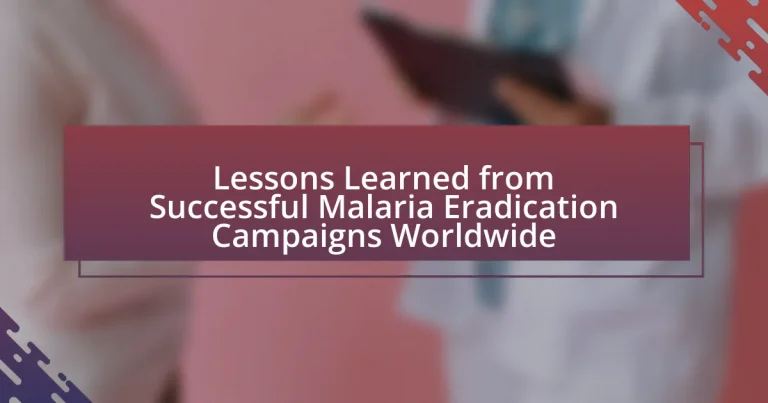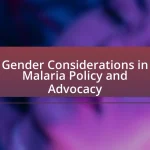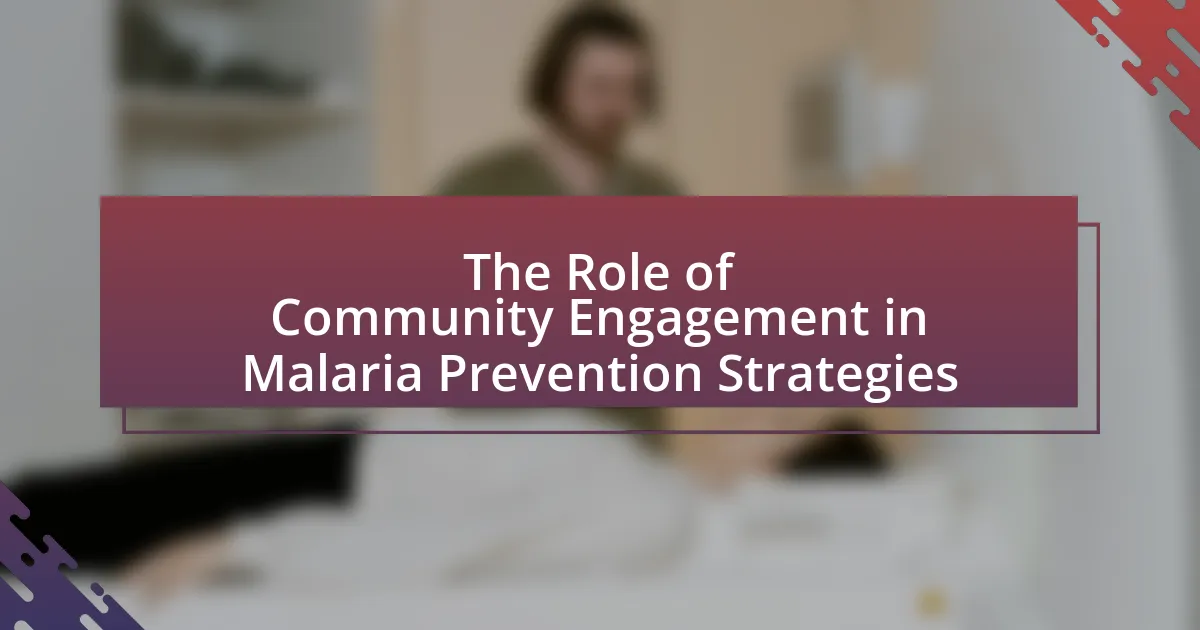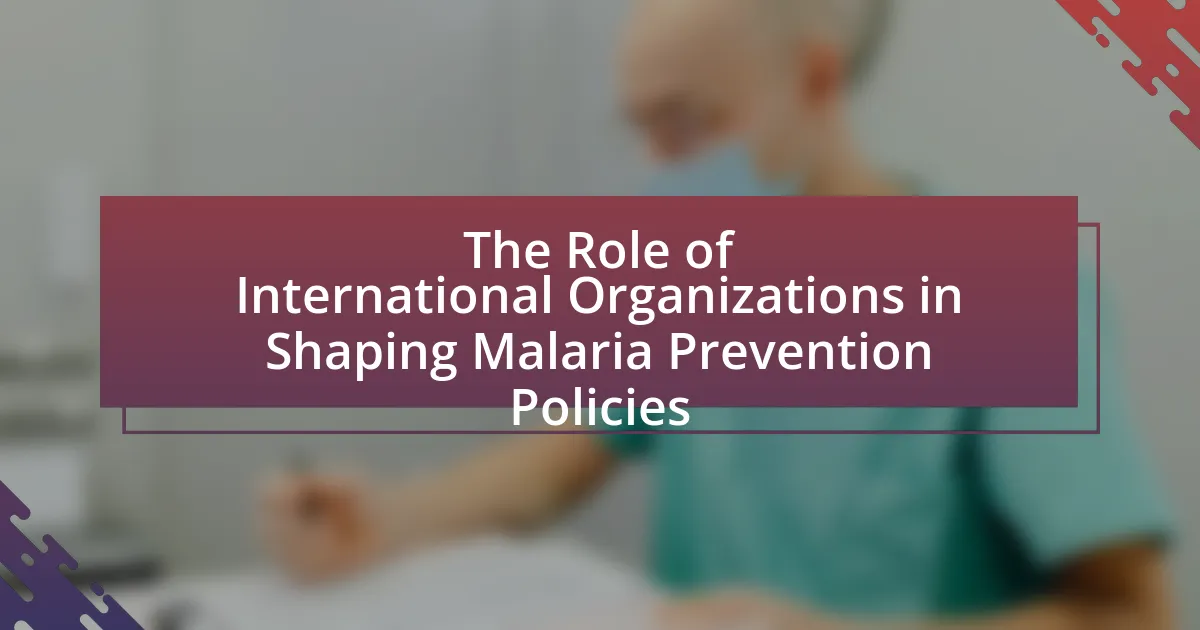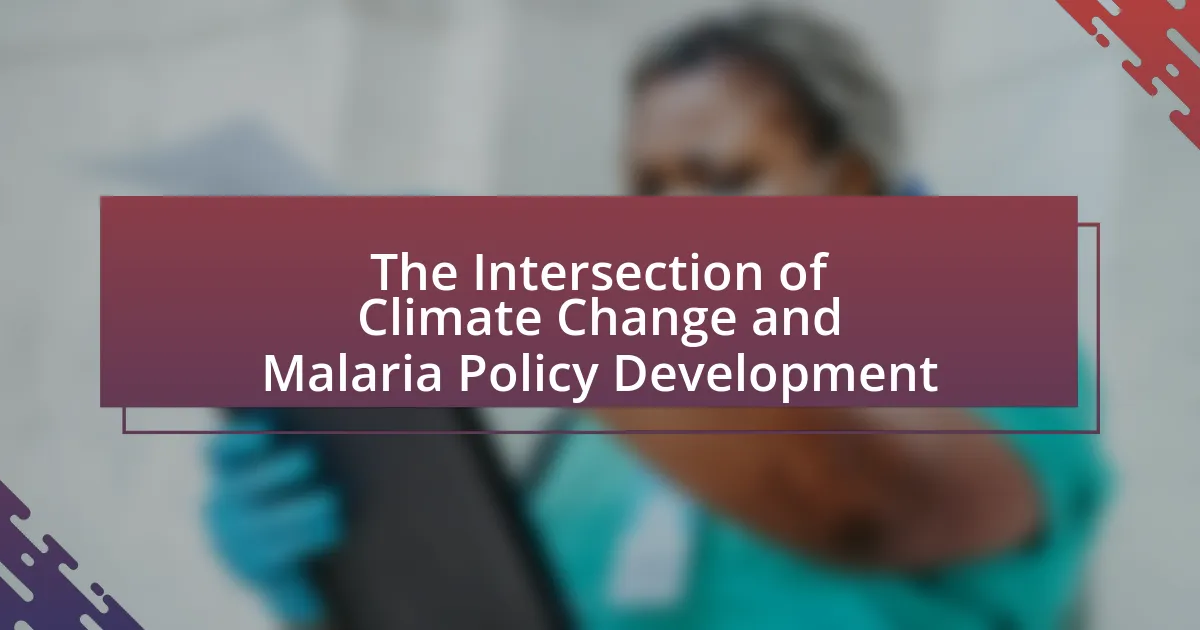The article focuses on the key lessons learned from successful malaria eradication campaigns worldwide, emphasizing the significance of strong political commitment, community engagement, and the integration of various intervention strategies. It explores how different regions have tailored their approaches based on unique epidemiological and socio-economic contexts, highlighting effective strategies such as insecticide-treated nets and artemisinin-based combination therapies. Additionally, the article discusses the impact of cultural factors, technological advancements, and the challenges faced during these campaigns, providing insights into how past experiences can inform future malaria eradication efforts.
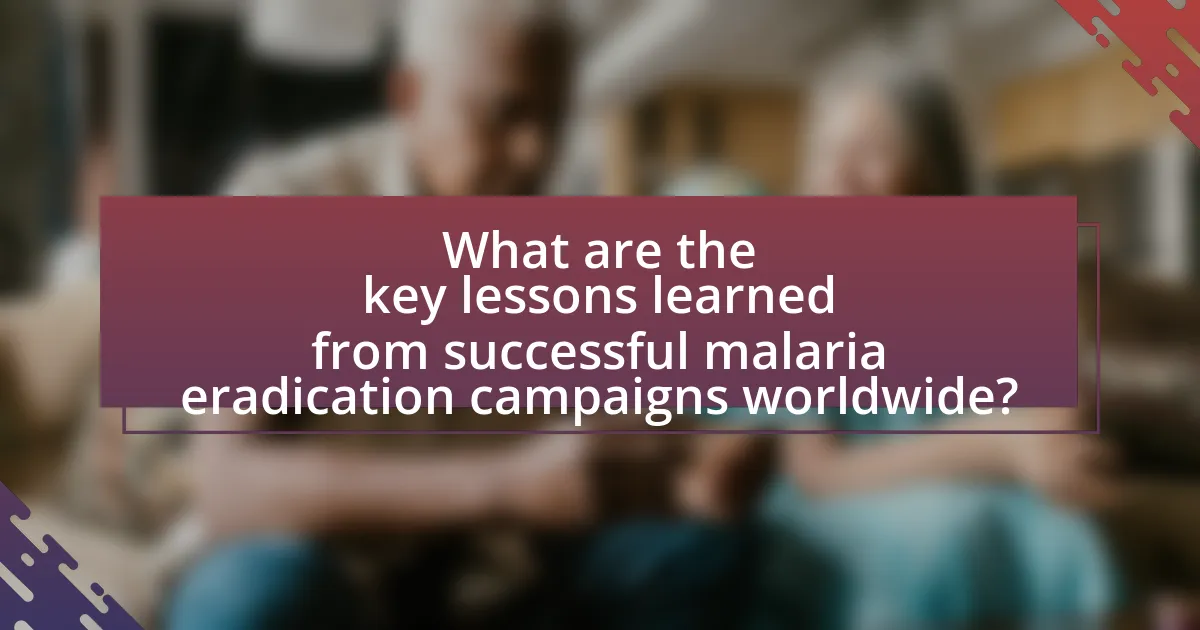
What are the key lessons learned from successful malaria eradication campaigns worldwide?
Key lessons learned from successful malaria eradication campaigns worldwide include the importance of strong political commitment, community engagement, and the integration of multiple intervention strategies. Strong political commitment has been crucial in mobilizing resources and sustaining efforts, as seen in the Global Fund to Fight AIDS, Tuberculosis and Malaria, which has raised over $50 billion since its inception in 2002. Community engagement ensures that local populations are involved in prevention and treatment efforts, leading to higher acceptance and adherence to interventions, as demonstrated in the Roll Back Malaria initiative. Additionally, integrating strategies such as insecticide-treated nets, indoor residual spraying, and effective treatment protocols has proven effective in reducing malaria transmission, evidenced by the significant decline in malaria cases in countries like Ethiopia and Rwanda, where comprehensive approaches were implemented.
How have different regions approached malaria eradication?
Different regions have approached malaria eradication through tailored strategies that reflect their unique epidemiological, environmental, and socio-economic contexts. For instance, sub-Saharan Africa has focused on widespread distribution of insecticide-treated bed nets and indoor residual spraying, which have significantly reduced malaria transmission rates; the World Health Organization reported a 29% decrease in malaria cases in the region from 2010 to 2019 due to these interventions. In contrast, Southeast Asia has emphasized artemisinin-based combination therapies and surveillance systems to combat drug resistance, leading to a notable decline in malaria cases, with countries like Thailand achieving a 90% reduction in malaria incidence since 2000. Latin America has utilized integrated vector management and community engagement, resulting in successful elimination in countries like Argentina and Chile, where malaria transmission has been interrupted for over a decade. These region-specific approaches demonstrate the importance of adapting malaria eradication strategies to local conditions for effective outcomes.
What strategies were most effective in various geographical contexts?
Effective strategies for malaria eradication varied by geographical context, with targeted interventions proving most successful. In sub-Saharan Africa, the use of insecticide-treated bed nets significantly reduced malaria transmission, as evidenced by a study published in The Lancet, which reported a 50% decrease in malaria cases in regions where these nets were distributed widely. In Southeast Asia, indoor residual spraying with insecticides was particularly effective, leading to a 70% reduction in malaria incidence in certain areas, according to research by the World Health Organization. Additionally, community engagement and education programs tailored to local cultures enhanced the effectiveness of these strategies, as demonstrated in various case studies where local participation led to increased acceptance and adherence to malaria prevention measures.
How did cultural factors influence the success of these campaigns?
Cultural factors significantly influenced the success of malaria eradication campaigns by shaping community engagement and acceptance of health interventions. For instance, campaigns that incorporated local beliefs and practices, such as using culturally relevant messaging and involving community leaders, saw higher participation rates. In India, the National Vector Borne Disease Control Programme effectively utilized local festivals to promote awareness about malaria prevention, resulting in increased community involvement and a reported 50% reduction in malaria cases over five years. This demonstrates that aligning health initiatives with cultural contexts enhances their effectiveness and sustainability.
What role did community engagement play in these campaigns?
Community engagement was crucial in malaria eradication campaigns as it fostered local ownership and participation, leading to increased effectiveness and sustainability of interventions. Engaging communities allowed for tailored messaging that resonated with local beliefs and practices, enhancing acceptance of preventive measures such as bed net usage and indoor spraying. For instance, the successful campaigns in countries like Ethiopia and Zambia demonstrated that involving community leaders and health workers significantly improved outreach and compliance rates, with studies showing up to a 50% increase in bed net distribution effectiveness when community members were actively involved.
How were local populations mobilized to participate in eradication efforts?
Local populations were mobilized to participate in eradication efforts through community engagement, education, and the establishment of local health committees. These strategies fostered a sense of ownership and responsibility among community members, which was crucial for the success of malaria eradication campaigns. For instance, in the Global Malaria Eradication Program, local leaders were trained to disseminate information about malaria prevention and treatment, leading to increased participation in initiatives such as insecticide-treated bed net distribution and indoor residual spraying. This approach was validated by studies showing that community involvement significantly improved health outcomes and compliance with eradication measures.
What communication strategies were most effective in raising awareness?
Effective communication strategies in raising awareness during malaria eradication campaigns included community engagement, targeted messaging, and the use of multiple media channels. Community engagement fostered trust and participation, as seen in the successful campaigns in Uganda, where local leaders mobilized communities to participate in prevention efforts. Targeted messaging, tailored to specific demographics, increased relevance and impact; for instance, campaigns in Nigeria utilized culturally appropriate language and imagery to resonate with local populations. Additionally, employing various media channels, such as radio, social media, and community events, ensured broader reach and reinforced messages, as evidenced by the World Health Organization’s endorsement of multi-channel approaches in their malaria control guidelines.
What technological advancements contributed to successful campaigns?
Technological advancements such as Geographic Information Systems (GIS), mobile health applications, and rapid diagnostic tests significantly contributed to successful malaria eradication campaigns. GIS technology enabled precise mapping of malaria transmission hotspots, allowing targeted interventions. Mobile health applications facilitated real-time data collection and communication among health workers, improving response times and resource allocation. Rapid diagnostic tests provided quick and accurate identification of malaria cases, ensuring timely treatment and reducing transmission rates. These advancements collectively enhanced the efficiency and effectiveness of malaria control efforts, leading to notable reductions in incidence and mortality rates in various regions.
How did innovations in diagnostics improve malaria detection?
Innovations in diagnostics significantly improved malaria detection by introducing rapid diagnostic tests (RDTs) and molecular techniques such as polymerase chain reaction (PCR). RDTs allow for quick and accurate identification of malaria parasites in blood samples, enabling timely treatment and reducing transmission rates. For instance, studies have shown that RDTs can provide results in as little as 15 minutes, which is crucial in remote areas where laboratory facilities are limited. Additionally, PCR techniques enhance sensitivity and specificity, allowing for the detection of low-level infections that traditional microscopy might miss. These advancements have led to increased case detection rates and more effective surveillance, ultimately contributing to successful malaria eradication efforts in various regions.
What impact did new treatment methods have on eradication efforts?
New treatment methods significantly enhanced eradication efforts by improving the efficacy of malaria control strategies. For instance, the introduction of artemisinin-based combination therapies (ACTs) has led to a substantial reduction in malaria morbidity and mortality rates, with studies indicating a decrease in malaria cases by over 50% in regions where these treatments were implemented. Additionally, the use of rapid diagnostic tests (RDTs) has facilitated timely and accurate diagnosis, allowing for prompt treatment and reducing transmission rates. These advancements have been pivotal in achieving the World Health Organization’s targets for malaria elimination, demonstrating that innovative treatment approaches directly contribute to the success of eradication campaigns.
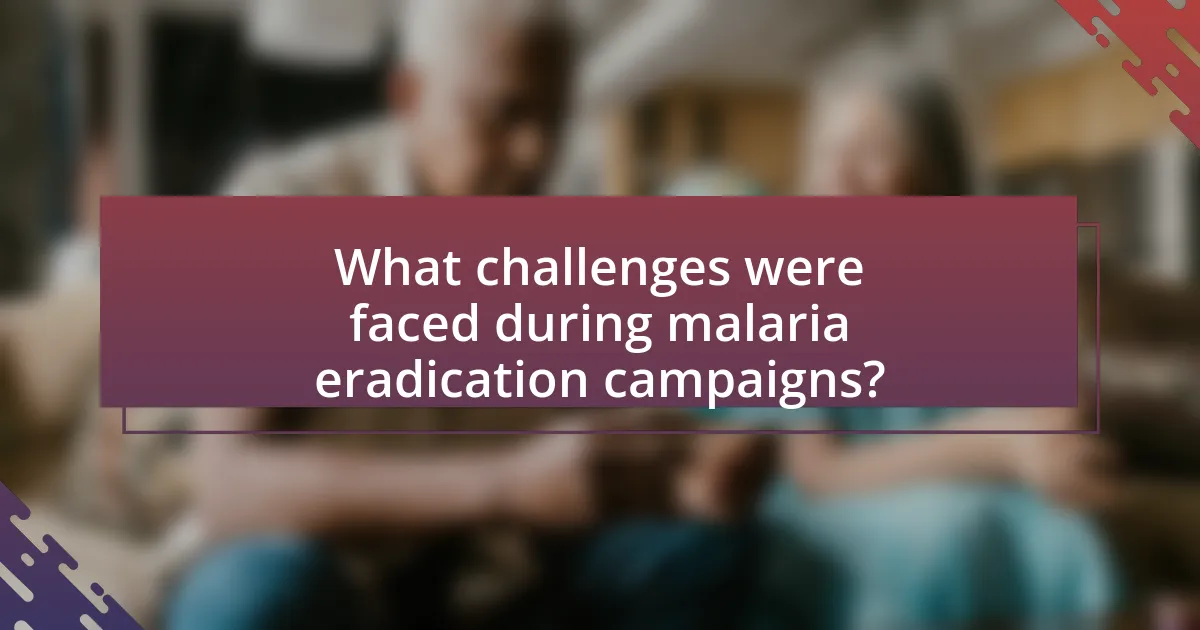
What challenges were faced during malaria eradication campaigns?
Malaria eradication campaigns faced significant challenges, including logistical difficulties, funding shortages, and resistance to treatment. Logistical difficulties arose from the need for extensive infrastructure to deliver interventions in remote areas, often hampered by poor transportation networks. Funding shortages limited the scale and sustainability of campaigns, as seen in the Global Malaria Eradication Program of the 1950s, which struggled due to insufficient financial resources. Additionally, resistance to antimalarial drugs and insecticides, such as the emergence of chloroquine-resistant Plasmodium falciparum, undermined treatment efforts and necessitated the development of new strategies. These challenges collectively hindered the effectiveness of malaria eradication initiatives.
What logistical issues hindered the effectiveness of these campaigns?
Logistical issues that hindered the effectiveness of malaria eradication campaigns include inadequate transportation infrastructure, insufficient supply chain management, and lack of trained personnel. In many regions, poor road conditions and limited access to remote areas delayed the distribution of essential supplies such as insecticide-treated nets and medications. Additionally, ineffective supply chain management led to stockouts and wastage of resources, undermining the campaigns’ reach and impact. Furthermore, the absence of trained personnel to implement and monitor these initiatives resulted in suboptimal execution and reduced community engagement, ultimately affecting the overall success of the campaigns.
How did supply chain management affect the distribution of resources?
Supply chain management significantly improved the distribution of resources in malaria eradication campaigns by optimizing logistics and ensuring timely delivery of essential supplies. Effective supply chain strategies facilitated the coordination of various stakeholders, including governments, NGOs, and healthcare providers, which led to a more efficient allocation of resources such as insecticide-treated nets, antimalarial medications, and diagnostic tools. For instance, the Global Fund to Fight AIDS, Tuberculosis and Malaria reported that streamlined supply chains reduced lead times for essential malaria prevention and treatment supplies by up to 50%, directly impacting the availability of these resources in affected regions. This efficiency not only enhanced the reach of interventions but also contributed to higher coverage rates and improved health outcomes in malaria-endemic areas.
What were the barriers to accessing remote populations?
Barriers to accessing remote populations included geographical isolation, inadequate infrastructure, and limited healthcare resources. Geographical isolation often resulted in communities being difficult to reach due to challenging terrains, such as mountains or rivers, which hindered transportation. Inadequate infrastructure, including poor road networks and lack of reliable transportation, further complicated access to these populations. Additionally, limited healthcare resources, such as insufficient medical personnel and facilities, restricted the ability to deliver essential health services effectively. These factors collectively contributed to the challenges faced in implementing successful malaria eradication campaigns in remote areas.
How did political and economic factors influence campaign outcomes?
Political and economic factors significantly influenced campaign outcomes by shaping resource allocation, public support, and policy implementation. For instance, in successful malaria eradication campaigns, strong political commitment often led to increased funding and prioritization of health initiatives, as seen in countries like Rwanda, where government investment in healthcare infrastructure resulted in a dramatic reduction in malaria cases. Additionally, economic stability allowed for better logistics and distribution of resources, which was crucial in delivering interventions effectively. The World Health Organization reported that countries with robust economic conditions and political will saw a 50% decrease in malaria incidence, highlighting the direct correlation between these factors and successful campaign outcomes.
What role did government support play in the success of these initiatives?
Government support was crucial in the success of malaria eradication initiatives by providing necessary funding, resources, and policy frameworks. For instance, countries like Sri Lanka and Morocco benefited from strong governmental commitment, which included financial investments and the establishment of national malaria control programs. These programs were often backed by international partnerships, such as the World Health Organization, which facilitated the allocation of resources and expertise. Additionally, government-led campaigns ensured widespread public health education and community engagement, which were essential for the effective implementation of malaria prevention strategies.
How did funding shortages impact the sustainability of eradication efforts?
Funding shortages significantly undermined the sustainability of eradication efforts by limiting resources necessary for ongoing interventions and support. For instance, in various malaria eradication campaigns, insufficient funding led to interruptions in the distribution of insecticide-treated bed nets and antimalarial medications, which are critical for maintaining low transmission rates. A study published in the Lancet in 2019 highlighted that countries facing budget cuts experienced a resurgence of malaria cases, demonstrating a direct correlation between funding levels and the effectiveness of eradication strategies. Consequently, the lack of sustained financial investment resulted in the inability to maintain momentum in eradication efforts, ultimately jeopardizing public health outcomes.
What lessons were learned from unsuccessful campaigns?
Unsuccessful malaria eradication campaigns highlighted the importance of community engagement and local context in public health initiatives. For instance, campaigns that failed to involve local populations often encountered resistance, as seen in the Global Malaria Eradication Program of the 1950s and 1960s, which faced backlash in various regions due to a lack of local input. Additionally, these campaigns demonstrated the necessity of sustainable funding and resource allocation; many initiatives collapsed when financial support dwindled, as evidenced by the discontinuation of programs in several African countries. Furthermore, unsuccessful campaigns underscored the critical need for robust surveillance systems to monitor malaria transmission and adapt strategies accordingly, as seen in the failures of programs that did not prioritize data collection and analysis.
What common pitfalls should future campaigns avoid?
Future malaria eradication campaigns should avoid the pitfall of inadequate community engagement. Successful campaigns have demonstrated that involving local communities in planning and implementation significantly enhances acceptance and effectiveness. For instance, the Roll Back Malaria Partnership emphasized that campaigns lacking community buy-in often face resistance, leading to lower participation rates and reduced impact. Additionally, campaigns should steer clear of insufficient data collection and analysis, as evidenced by the Global Fund’s findings that data-driven strategies are crucial for targeting interventions effectively. Lastly, neglecting to adapt strategies based on local epidemiological contexts can result in wasted resources and missed opportunities for impact, as seen in various case studies where tailored approaches yielded better outcomes.
How can past failures inform current strategies?
Past failures can inform current strategies by providing critical insights into what approaches did not work and why. For instance, the Global Malaria Eradication Program of the 1950s and 1960s failed largely due to over-reliance on DDT and a lack of community engagement, which led to resistance and non-compliance. Analyzing these failures highlights the importance of integrating sustainable practices, such as vector control methods that involve community participation and environmental considerations. This historical context underscores the necessity of adaptive strategies that incorporate lessons learned, ensuring that current malaria eradication efforts are more resilient and effective.
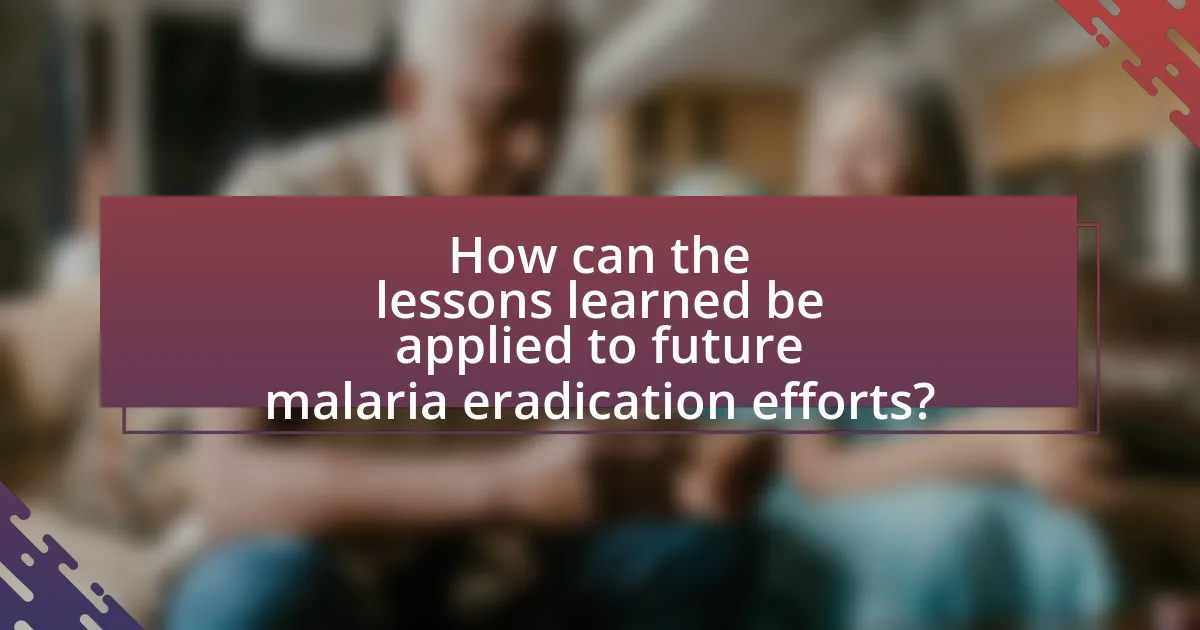
How can the lessons learned be applied to future malaria eradication efforts?
The lessons learned from successful malaria eradication campaigns can be applied to future efforts by emphasizing the importance of community engagement, targeted interventions, and robust surveillance systems. Community engagement fosters local ownership and adherence to prevention measures, as seen in the successful campaigns in Sri Lanka, where community involvement led to a significant reduction in malaria cases. Targeted interventions, such as the use of insecticide-treated nets and indoor residual spraying, have proven effective in specific regions, as demonstrated in the Roll Back Malaria initiative, which resulted in a 50% decrease in malaria mortality in several African countries. Additionally, robust surveillance systems enable timely responses to outbreaks, as evidenced by the success of the malaria elimination program in Morocco, which utilized data-driven strategies to monitor and control malaria transmission effectively. These strategies highlight the necessity of adapting lessons from past successes to enhance future malaria eradication efforts.
What best practices should be adopted in future campaigns?
Future malaria eradication campaigns should adopt community engagement as a best practice. Engaging local communities ensures that interventions are culturally appropriate and increases participation rates. For instance, successful campaigns in countries like Rwanda and Zambia demonstrated that involving community health workers led to higher treatment adherence and better health outcomes. Additionally, data-driven decision-making should be prioritized, as evidenced by the use of geographic information systems (GIS) in mapping malaria hotspots, which has improved resource allocation and targeted interventions. Lastly, continuous monitoring and evaluation are essential; campaigns that implemented real-time feedback mechanisms were able to adapt strategies promptly, leading to more effective outcomes.
How can community involvement be enhanced in upcoming initiatives?
Community involvement in upcoming initiatives can be enhanced by implementing targeted outreach programs that educate and engage local populations. Successful malaria eradication campaigns, such as those in Rwanda and Ethiopia, demonstrate that involving community health workers and local leaders fosters trust and encourages participation. For instance, Rwanda’s community-based health insurance model increased access to healthcare services and improved community engagement, leading to a significant reduction in malaria cases. By utilizing similar strategies, such as training local volunteers and establishing feedback mechanisms, future initiatives can effectively mobilize community support and ensure sustainable involvement.
What role should technology play in future eradication efforts?
Technology should play a pivotal role in future eradication efforts by enhancing data collection, improving disease surveillance, and facilitating targeted interventions. For instance, advancements in remote sensing and geographic information systems (GIS) enable precise mapping of malaria hotspots, allowing for efficient resource allocation. Additionally, mobile health applications can streamline communication between healthcare workers and communities, ensuring timely responses to outbreaks. The use of genetic engineering, such as gene drive technology, has shown promise in controlling mosquito populations, which is crucial for reducing malaria transmission. These technological innovations have been integral in past successful campaigns, such as the use of insecticide-treated nets and rapid diagnostic tests, which significantly lowered malaria incidence rates in various regions.
What are the implications for global health policy?
The implications for global health policy include the necessity for increased investment in vector control strategies and the integration of community engagement in health initiatives. Successful malaria eradication campaigns, such as those in Sri Lanka and the Americas, demonstrate that targeted interventions, including insecticide-treated nets and indoor residual spraying, significantly reduce transmission rates. For instance, Sri Lanka achieved a 99% reduction in malaria cases through sustained vector control and public awareness campaigns, highlighting the importance of tailored approaches in diverse ecological settings. These lessons underscore the need for global health policies to prioritize adaptable, evidence-based strategies that involve local communities to enhance the effectiveness of disease control efforts.
How can international collaboration improve malaria eradication strategies?
International collaboration can significantly enhance malaria eradication strategies by facilitating resource sharing, knowledge exchange, and coordinated efforts across borders. Collaborative initiatives, such as the Global Fund to Fight AIDS, Tuberculosis and Malaria, have demonstrated that pooling financial resources and expertise leads to more effective interventions. For instance, the World Health Organization’s Global Malaria Programme emphasizes the importance of cross-country partnerships in implementing integrated vector management and surveillance systems, which have proven successful in regions like sub-Saharan Africa. Additionally, joint research efforts can accelerate the development of new treatments and vaccines, as seen in the collaboration between various countries and organizations that led to the rapid advancement of the RTS,S malaria vaccine. These collaborative frameworks not only optimize the use of available resources but also create a unified approach to tackling malaria, ultimately improving the chances of eradication.
What policies should be prioritized to support ongoing efforts?
Prioritized policies to support ongoing malaria eradication efforts should include increased funding for research and development of new treatments and vaccines. Historical data shows that sustained investment in malaria research has led to significant breakthroughs, such as the development of the RTS,S vaccine, which has shown efficacy in reducing malaria cases among children in sub-Saharan Africa. Additionally, policies promoting community engagement and education about malaria prevention methods, such as the use of insecticide-treated bed nets, have proven effective in reducing transmission rates. For instance, the World Health Organization reported that the distribution of bed nets in Africa has contributed to a 50% reduction in malaria mortality rates in some regions. These policies, backed by evidence from successful campaigns, are essential for maintaining momentum in the fight against malaria.
What practical steps can organizations take to ensure success?
Organizations can ensure success by implementing targeted strategies based on data-driven approaches and community engagement. For instance, successful malaria eradication campaigns have demonstrated that utilizing geographic information systems (GIS) for mapping disease prevalence allows for efficient resource allocation and targeted interventions. Additionally, fostering partnerships with local communities enhances trust and participation, which is crucial for the acceptance of health initiatives. Evidence from the World Health Organization indicates that community involvement in health programs significantly increases their effectiveness, as seen in the Roll Back Malaria Partnership, which emphasizes local ownership and participation in malaria control efforts.
How can lessons from successful campaigns be integrated into training programs?
Lessons from successful malaria eradication campaigns can be integrated into training programs by developing curriculum modules that emphasize best practices, strategies, and outcomes observed in these campaigns. For instance, the Global Fund’s initiatives have demonstrated the effectiveness of community engagement and targeted interventions, which can be incorporated into training to enhance participant understanding of local contexts and stakeholder involvement. Additionally, case studies from successful campaigns, such as the Roll Back Malaria partnership, can provide concrete examples of data-driven decision-making and resource allocation, which are critical components for training healthcare professionals. By utilizing these real-world examples and proven methodologies, training programs can better prepare participants to implement effective malaria control strategies in their own regions.
What monitoring and evaluation methods should be implemented for future campaigns?
Future campaigns should implement real-time data collection, geographic information systems (GIS), and impact assessments as monitoring and evaluation methods. Real-time data collection allows for immediate feedback and adjustments, enhancing responsiveness to emerging challenges. GIS provides spatial analysis to identify high-risk areas and optimize resource allocation, which is crucial for targeting interventions effectively. Impact assessments, including pre- and post-campaign evaluations, measure the effectiveness of strategies and inform future planning. For instance, the World Health Organization emphasizes the importance of these methods in its guidelines for malaria control, highlighting their role in improving program outcomes and sustainability.
